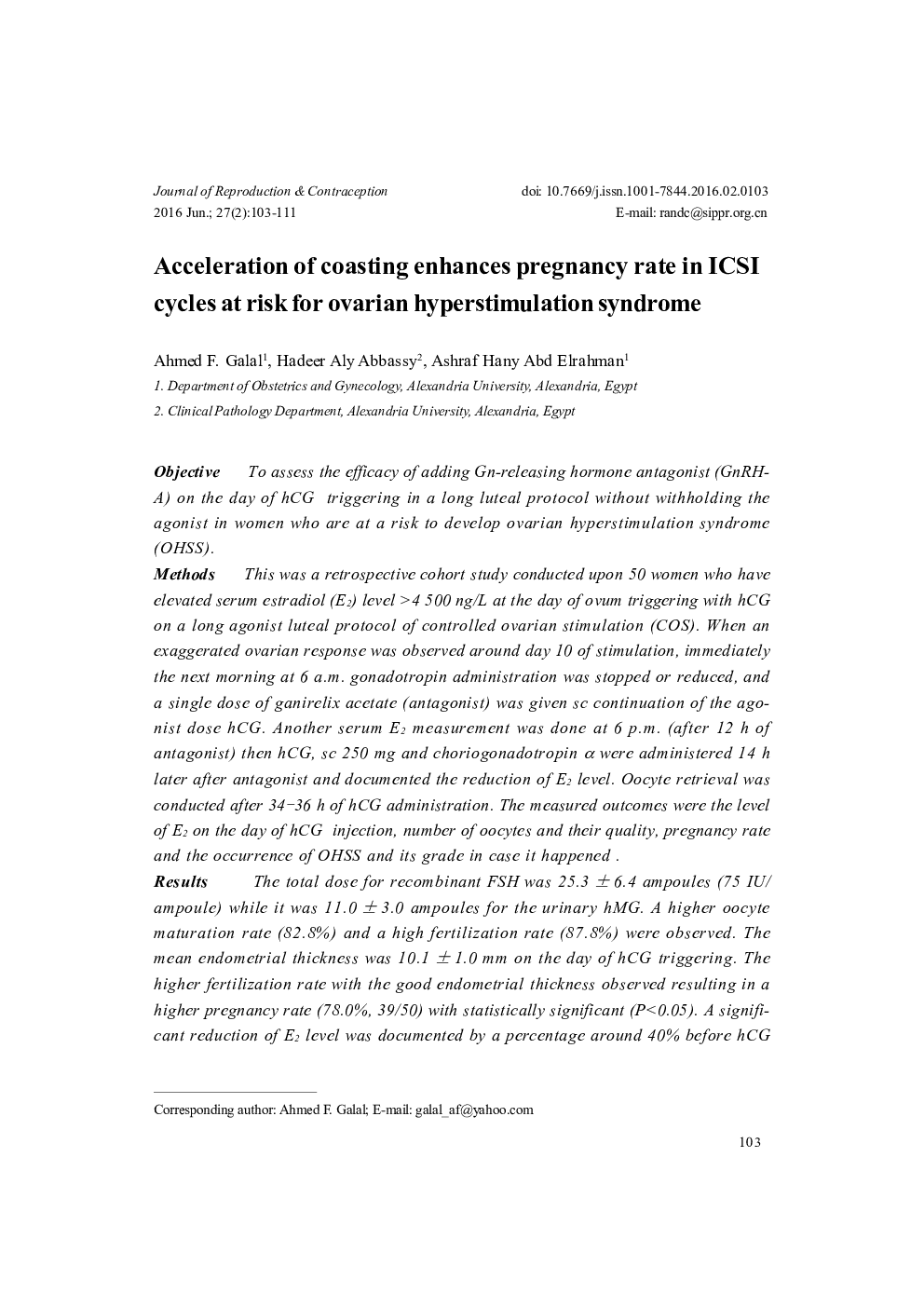| Article ID | Journal | Published Year | Pages | File Type |
|---|---|---|---|---|
| 3963855 | Journal of Reproduction and Contraception | 2016 | 9 Pages |
ObjectiveTo assess the efficacy of adding Gn-releasing hormone antagonist (GnRH-A) on the day of hCG triggering in a long luteal protocol without withholding the agonist in women who are at a risk to develop ovarian hyperstimulation syndrome (OHSS).MethodsThis was a retrospective cohort study conducted upon 50 women who have elevated serum estradiol (E2) level >4 500 ng/L at the day of ovum triggering with hCG on a long agonist luteal protocol of controlled ovarian stimulation (COS). When an exaggerated ovarian response was observed around day 10 of stimulation, immediately the next morning at 6 a.m. gonadotropin administration was stopped or reduced, and a single dose of ganirelix acetate (antagonist) was given sc continuation of the agonist dose hCG. Another serum E2 measurement was done at 6 p.m. (after 12 h of antagonist) then hCG, sc 250 mg and choriogonadotropin α were administered 14 h later after antagonist and documented the reduction of E2 level. Oocyte retrieval was conducted after 34-36 h of hCG administration. The measured outcomes were the level of E2 on the day of hCG injection, number of oocytes and their quality, pregnancy rate and the occurrence of OHSS and its grade in case it happened .ResultsThe total dose for recombinant FSH was 25.3±6.4 ampoules (75 IU/ampoule) while it was 11.0±3.0 ampoules for the urinary hMG. A higher oocyte maturation rate (82.8%) and a high fertilization rate (87.8%) were observed. The mean endometrial thickness was 10.1±1.0 mm on the day of hCG triggering. The higher fertilization rate with the good endometrial thickness observed resulting in a higher pregnancy rate (78.0%, 39/50) with statistically significant (P<0.05). A significant reduction of E2 level was documented by a percentage around 40% before hCG injection. There were no reported cases of severe or moderate OHSS, however 13 cases (26%) were reported to have mild OHSS constituting.ConclusionAcceleration of coasting in cases of OHSS through treatment with GnRH-A after pituitary suppression with GnRH agonist (GnRH-a) offered a novel approach to decrease E2 level, avoided cycle cancellation, and maintain excellent oocyte maturation rate, and finally result in high pregnancy rate with prevention of OHSS.
